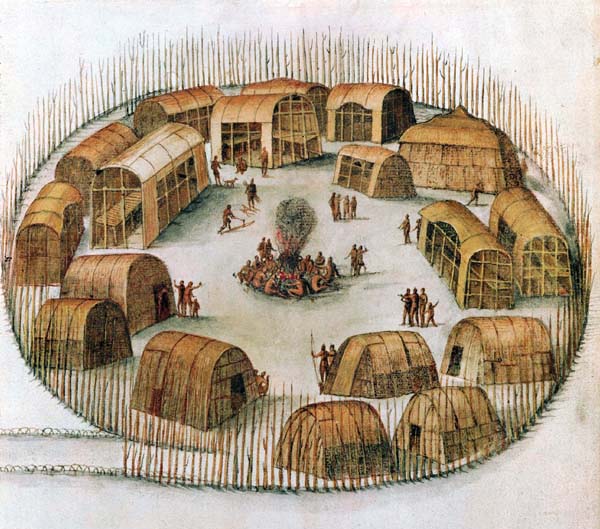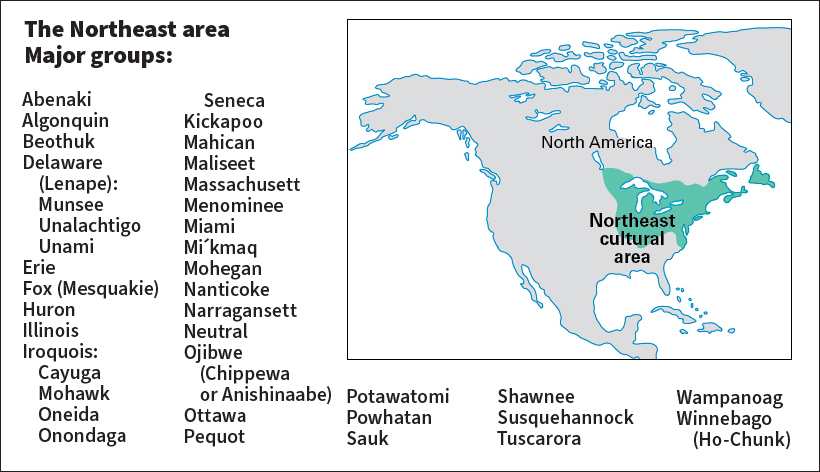Algonquin << al GONG kihn or al GONG kwihn >> are a people who once fished and hunted in the Ottawa River region of Canada, in what is now Ontario and Quebec. They are a First Nations people, a designation used for indigenous (native) groups in Canada. They are also called the Algonkin. The Algonquin, Cree, and other tribes spoke Algonquian languages, a group of related languages named for the Algonquin. These tribes had strong similarities, and scholars use the term Algonquian or Algonquian family to refer to all of the Algonquian-speaking tribes.

The Algonquin lived in bands of 100 to 300 members. Each band was divided into hunting groups of up to 25 close relatives. Algonquin families lived in lodges made of bent saplings covered with birchbark. Each lodge housed a husband and wife, their young children and unmarried grown-up daughters, and their married sons with their own wives and children.
In winter, the Algonquin hunted deer, moose, and other animals. During the rest of the year, they fished and also gathered wild fruits, nuts, and roots. The Algonquin were experts in building and handling canoes. They traveled by canoe during spring, summer, and fall. In winter, they used toboggans and snowshoes.
The Algonquin believed in a great spirit, an especially powerful god. But they believed their lives were affected mostly by ancestral spirits and the spirits of animals, plants, and other natural surroundings. Certain men and women, called shamans, were thought to have spiritual powers and served as advisers.

The Algonquin and their allies the Huron fought a bitter war against the Iroquois during the 1600’s. About 1640, the Algonquin were defeated and driven from their territory. This war and epidemics of measles and smallpox reduced the Algonquin population from about 4,000 to 1,000 in a 10-year period. Today, there are several thousand Algonquin, most of whom live in eastern Ontario and southwestern Quebec.
